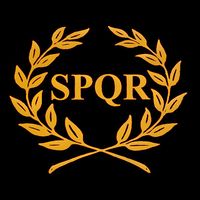Aedes Herculi
m (Adding tags) |
m (removed disabiguation page category.) |
||
| Line 14: | Line 14: | ||
The discovery of another, larger bronze ("'''Hercules Righetti'''"), now in the Museo Pio-Clementino, Sala Rotunda, Vatican Museum, Rome, was described by Rodolfo Lanciani. "The colossal Hercules of the Vatican (Ercole Mastai), discovered August 8, 1864, under the foundations of Pompey's theatre, had been not only concealed, but actually buried, with the utmost care, in a kind of coffin built of solid masonry, and veneered with marble." [http://penelope.uchicago.edu/Thayer/E/Gazetteer/Places/Europe/Italy/Lazio/Roma/Rome/_Texts/Lanciani/LANARD/11*.html] | The discovery of another, larger bronze ("'''Hercules Righetti'''"), now in the Museo Pio-Clementino, Sala Rotunda, Vatican Museum, Rome, was described by Rodolfo Lanciani. "The colossal Hercules of the Vatican (Ercole Mastai), discovered August 8, 1864, under the foundations of Pompey's theatre, had been not only concealed, but actually buried, with the utmost care, in a kind of coffin built of solid masonry, and veneered with marble." [http://penelope.uchicago.edu/Thayer/E/Gazetteer/Places/Europe/Italy/Lazio/Roma/Rome/_Texts/Lanciani/LANARD/11*.html] | ||
This statue was found buried under stone slabs with the inscription "FCS" ("''fulgor conditum summanium''". [http://www.pompey.cch.kcl.ac.uk/Excavations_EarlyStudies.htm] | This statue was found buried under stone slabs with the inscription "FCS" ("''fulgor conditum summanium''". [http://www.pompey.cch.kcl.ac.uk/Excavations_EarlyStudies.htm] | ||
| − | |||
| − | |||
| − | |||
| − | |||
Latest revision as of 09:58, 23 June 2024
Home| Latíné | Deutsch | Español | Français | Italiano | Magyar | Português | Română | Русский | English
This article is a stub. Can you help by expanding it?
Please help! Providing citations in accordance with our guidelines will improve the quality of our site.
There were many temples to Hercules:
Additionally, two large gilt bronze statues of Hercules have survived.
One was found in the Forum Boarium and is now in the Palazzo dei Conservatori, Capitoline Museums, Campidoglio, Rome. It is thought to be the cult statue from the Aedes Herculi Olivarii. [1]
The discovery of another, larger bronze ("Hercules Righetti"), now in the Museo Pio-Clementino, Sala Rotunda, Vatican Museum, Rome, was described by Rodolfo Lanciani. "The colossal Hercules of the Vatican (Ercole Mastai), discovered August 8, 1864, under the foundations of Pompey's theatre, had been not only concealed, but actually buried, with the utmost care, in a kind of coffin built of solid masonry, and veneered with marble." [2] This statue was found buried under stone slabs with the inscription "FCS" ("fulgor conditum summanium". [3]
